- Home
- Anne Schraff
The Life of Frederick Douglass
The Life of Frederick Douglass Read online
About this Book
Frederick Douglass’s Leading Voice
“There is no way a nation can call itself free and accept slavery,” remarked Frederick Douglass. Despite being a slave, as a young boy Frederick learned to read and write. Then, at age twenty-one, he escaped from slavery and forged a new life for himself as a free man. Intelligent and charismatic, by the 1800s Douglass had become the leading voice against slavery in the United States. Traveling around the country and abroad, he exposed the horrors of slavery, calling for the freedom and equality of all human beings.
In The Life of Frederick Douglass: Speaking Out Against Slavery, author Anne Schraff brings fresh insight to Douglass's story, taking readers on an extraordinary journey from torment to triumph with the famous author and orator.
“…a fine addition to the biography section.”
—ALMA
“…perfect for the middle readers.”
—NJEA Review
ABOUT THE AUTHOR
Anne Schraff is the author of numerous works of fiction and nonfiction for young people. She maintains a keen interest in United States and world history.
CONTENTS
Cover
About this Book
Title Page
* * *
Chapter 1: “I Was a Man Now”
Chapter 2: Somebody’s Child
Chapter 3: Lessons in Freedom
Chapter 4: The Turning Point
Chapter 5: Dream of Freedom Fulfilled
Chapter 6: An Orator Is Born
Chapter 7: Fighting for Freedom
Chapter 8: The Struggle for Equality
Chapter 9: Sorrow and Sunshine
Chapter 10: Haiti and the Final Days
* * *
Chronology
Chapter Notes
Further Reading
Index
Note to Our Readers
Copyright
More Books from Enslow
Chapter 1
“I WAS A MAN NOW”
Image Credit: My Bondage and My Freedom: Part I- Life as a Slave, Part II- Life as a Freeman
Traveling throughout the United States and abroad, Frederick Douglass exposed the horrors of slavery, calling for the freedom and equality of all human beings.
On January 1, 1834, fifteen-year-old Frederick Bailey was, for the first time in his life, a field slave. Born into slavery, he had always served in homes. Now his master had rented him out to Edward Covey, a farmer on Maryland’s Eastern Shore with a reputation as a slave-breaker. Covey was known as a man who could break the spirit of any rebellious slave.
On this very cold day Frederick was sent into the woods to get a load of wood that he had chopped and stacked the previous day. Frederick was ordered to drive an ox cart, something he had never done before. Covey instructed him briefly, then sent Frederick off. Disaster soon struck the inexperienced young man.
A sudden noise frightened the oxen and they took off, dragging the cart behind them, banging it against trees, and finally overturning it. Frederick struggled frantically to get the team disentangled from the brush. He righted the cart and finally reached the pile of wood. He began loading the logs into the cart, and when it was full he started for home. As he reached the Covey farm, the ox team once again bolted, breaking Covey’s gate and almost crushing Frederick against the shattered wood.
When Covey learned of the accident and the long time Frederick had taken to do what Covey considered a minor job, he ordered the boy back into the woods at once. Frederick later recalled the incident in detail. Covey went to a large black gum tree, glared at the boy, and said, “I’ll teach you how to waste time and break gates.”1 Using his jackknife, he cut off three shoots, or switches. “Take off your clothes,” he told Frederick.2 Frederick refused and Covey rushed at him, tore off his clothing, and flogged the boy. The whip cut deeply into Frederick’s back, causing blood to run down his spine and raising welts as large as his little finger.3
It was only the beginning of what would be regular, brutal beatings at Covey’s hands.
During one hot August day, Frederick and the other slaves were separating wheat from chaff. Frederick was so exhausted by the long days, often working from sunup well into darkness, that he snatched a moment to rest. Covey found him and gave him a hard kick to his side. Frederick still refused to rise on command, so Covey snatched up a hickory slat, striking Frederick a sharp blow to the head.
With blood streaming “from the crown of my head to my feet,” as Frederick remembered, he ran from the Covey farm to the home of his master.4 When he told Thomas Auld, his master, of the cruel treatment he had been dealt, Auld was unmoved. He ordered Frederick back to Covey’s farm.
The brutal treatment at the hands of Covey continued until one day when Covey tried once more to thrash Frederick. Frederick described how the “fighting madness” came upon him as he fought back against Covey.5 Frederick grabbed Covey’s throat and flung the man to the ground. When Covey called on nearby slaves to help him subdue Frederick, they pretended not to hear.
The battle between Frederick and Edward Covey raged for two hours. Frederick was not trying to hurt Covey, but he wanted to keep Covey from hurting him. Covey finally gave up the effort, telling Frederick, “Now, you scoundrel, go to your work!”6 The humiliated Covey pretended that he had succeeded in humbling Frederick.
The teenaged Frederick was jubilant. He saw this act of defiance as “the turning point in my career as a slave.”7 He changed after the fight. “I was nothing before,” he said, “I was a man now.”8 He had reached the point where he was no longer afraid to die, and that gave him courage to stand up to Covey. During the final months that he worked for Covey, Frederick was never whipped again.
Chapter 2
SOMEBODY’S CHILD
Frederick Augustus Washington Bailey was born in February 1818 near Tuckahoe in Talbot County on the Eastern Shore of Maryland. According to legend, Tuckahoe gained its name when a local farmer took a hoe belonging to another man. “Took a hoe” became Tuckahoe.
Frederick’s mother was Harriet Bailey, daughter of Isaac Bailey, a free black man, and Betsy Bailey, a copper-dark slave. Betsy Bailey had five daughters: Jenny, Esther, Milly, Priscilla, and Harriet. According to law, all Betsy’s children became slaves like their mother and were the property of their mother’s master.
Frederick did not know who his father was, but he always believed that his father was a white man. “He was admitted to be such,” Frederick later wrote, “by all I ever heard speak of my parentage.”1 As a small boy, and all through his life, Frederick wondered who his father might be. He always noticed that his skin color, slightly yellowish, was different from the color of his siblings, and that fueled his conviction that his father was white.2
Soon after giving birth to Frederick, Harriet Bailey had to return to her work twelve miles away as a field hand. So Frederick was raised by his grandparents. Grandfather Isaac was a carpenter and Grandmother Betsy took care of Frederick and any other grand- children who were in the cabin at the time. “Grandmammy was, indeed, at the time, all the world to me,” Frederick later wrote.3 He observed early on how much his grandmother was respected by her neighbors. She was a good nurse and a fine fisher. She made skillful nets for catching shad and herring, and the boy’s early memories were of watching his grandmother standing waist deep in water for many hours hauling in nets full of fish. Frederick’s grandmother was also an outstanding farmer. The sweet potato seedlings she planted did so well that her neighbors asked her to plant their gardens along with her own.
Frederick later remembered a happy childhood in his grandparents’ cabin. He recalled swinging from the loft where he s
lept with his cousins, splashing in the nearby sea, and mimicking the sounds of the farm animals. He wrote of a “spirited, joyous, uproarious and happy childhood.”4
The family lived in an old cabin with a rail floor upstairs and a clay floor downstairs. There was a chimney but no windows. A hole in front of the fireplace was used to protect sweet potatoes from the frost. Though Frederick spent happy hours tending the garden and chasing squirrels, he described a shadow that always darkened his world. He knew that somewhere there was a white man who owned him and his grandmother.
Although Frederick said that he saw his mother only “four or five times,” in his whole life, he wrote vividly of her.5 “She was tall and finely proportioned; of deep black, glossy complexion.”6
When Frederick’s mother came for one of her infrequent visits, she had to walk the twelve miles at night, so she could make the round-trip and be back at her chores in the morning. Because she had to get started for home soon after she arrived, Frederick saw her only briefly and then only in the darkness. He never saw his mother’s face in daylight. When she arrived in the cabin, Frederick would be in bed and his mother would lie down with him and comfort him until he fell asleep. They would not speak to each other and when Frederick awoke in the mornings, she was long gone.
Frederick lamented later that he was not “very deeply attached” to his mother.7 He bitterly resented the slave system for denying his mother the “intelligent smiles of her child.”8
Frederick had five brothers and sisters. Perry, Sarah, and Eliza were older, and he had little contact with them as a young child. They had been sent away when they grew old enough to do useful work. Kitty and Arianna were born after Frederick, and he knew them until he was six and was himself sent away.
Frederick loved the old cabin where he lived with his grandparents. He could work the well by himself, getting a drink whenever he needed one. He enjoyed watching the ponderous mill wheel turn and seeing all the neighbors come to get their corn ground. But when he turned six, Frederick’s world changed dramatically. His sister Kitty was only four and Arianna was two when, in the late summer of 1824, Frederick took his grandmother’s hand and began a long journey. It was a beautiful morning and Frederick was lighthearted. His grandmother did not tell the boy what would soon happen.
The journey was hard for little Frederick, so his grandmother frequently lifted him to her shoulders and carried him until he felt strong enough to march farther on his own short legs. Frederick described his grandmother as “remarkably straight in figure and elastic and muscular in movement.”9 She wore a smoothly ironed bandanna and when Frederick was frightened by what appeared to be a wild animal peering from the woods, she offered her skirt for him to hide behind.
The woman and child arrived at the beautiful home of Colonel Edward Lloyd. Frederick was sent off to play in a group of black, brown, and copper-colored children. They were all strangers to him. He was told that Perry, his brother, and Eliza and Sarah, his sisters, were among them, but Frederick did not recognize his siblings.
His grandmother patted Frederick on the head and told him to play with his brother and sisters because “they are kin to you.”10 Frederick was troubled by the fact that his grandmother looked terribly sad.11 He was drawn to play with the other children, but he was nervous about letting go of his beloved grandmother’s hand. She was the rock he had always clung to.
Frederick joined the group of playing children and in a little while one of the children shouted out, “Fed, Fed, grandmamma gone!”12 The frantic little boy ran to the kitchen in search of his grandmother. Not finding her there, he rushed outside. He fell on the ground sobbing. Perry came to console him, offering him some peaches and pears. Frederick hurled the fruit to the ground and sobbed until weariness finally overtook him and he fell asleep. He was never again to see his grandmother.
When Frederick recovered from the loss of his grandmother, he began to survey his new surroundings. Wye House, the center of Colonel Lloyd’s plantation, was a lavish place surrounded by broad green lawns, magnificent gardens, and orange trees. Elegant carriages came and went, bringing well-dressed ladies and gentlemen to elaborate feasts. Edward Lloyd was one of the richest men in Maryland. The small boy, accustomed to simple, plain food, saw for the first time in his life slabs of fragrant cheeses, golden butter, wild geese and partridges, crisp lettuce, figs, raisins, and almonds, all served with brandies, wines, and flavored teas. Frederick later said that all this grand living was “blood bought” on the backs of slaves.13
Frederick’s master was Aaron Anthony, whose home was on the Lloyd plantation. Anthony managed the estates owned by Colonel Lloyd. Anthony, usually called Captain Bay, owned two or three farms and thirty slaves. Frederick was sent to live in Captain Anthony’s house, which was run by a black slave called Aunt Katy. Frederick described her as “ambitious, ill tempered, and cruel.”14
For the first time in his young life, Frederick learned what it was like to be treated as a slave. He slept on the floor in a closet near the kitchen. No more cozy cabin loft with his cousins. He ate cornmeal mush from an oyster shell or a shingle with the other slave children. They crouched together at a trough like animals. Like all slave children, Frederick had no shoes, stockings, trousers, or jacket. His only clothing was two coarse linen shirts each year that hung below his knees. If these garments fell apart from wear before the year was up, the children went naked. Boys and girls, seven to ten, went naked in summer and winter.
While living on the Lloyd plantation, Frederick received his last visit from his mother. It had been a very bad day for the boy because he had aroused the ire of Aunt Katy, who ruled the kitchen and the children. She decided to punish Frederick by denying him his evening meal, a slice of corn bread, which he lived for. In fact, Aunt Katy threatened to “starve the life out of” Frederick.15 Frederick watched the other children getting their ration of corn bread and he went outside and wept. Later, he managed to steal a few kernels of corn. He was nibbling on them when his mother arrived.
Frederick told his mother what had happened and how he was too hungry to sleep. Harriet Bailey marched up to Aunt Katy and scolded her for her cruelty. Then Frederick recalled, “I learned the fact that I was not only a child, but somebody’s child.”16 His mother brought him a sweet cake in the shape of a heart, with a rich, dark ring glazed at the edge of it. Frederick later recalled eating the little cake and feeling “prouder on my mother’s knee than a king upon his throne.”17
Frederick remembered this night for the rest of his life. It was especially powerful because he never saw his mother again. Harriet Bailey grew very sick and suffered for some time, but the boy was never told of her illness. He was not able to visit her when she was dying, nor did he even learn of her death until some time after it happened. She died in 1825 or 1826, while still a young woman. Frederick later grieved that his mother died alone, without the comfort of her children around her. “The heartless and ghastly form of slavery rises between mother and child, even at the bed of death,” he wrote.18
Frederick’s master, Captain Anthony, was a fifty-seven-year-old widower who shared his home with two sons and a daughter. Son Richard was a wastrel, and son Andrew a brutal drunkard. Daughter Lucretia, however, about twenty years old, developed an affection for Frederick. “[She sometimes gave] me a piece of bread and butter,” he recalled.19 She was married to Thomas Auld and had no children of her own. When Aunt Katy deprived Frederick of food, Lucretia would frequently sneak snacks to him.
Although Frederick was forbidden to wander over to Wye House and visit with the slaves there, he could not resist sneaking out to see the wonders there. Frederick met Daniel Lloyd, son of Colonel Lloyd, and a friendship developed between the boys. Daniel was five years older than Frederick, but he had no white playmates so he chose Frederick to go hunting with him in the woods. Daniel shot the birds, and Frederick retrieved them. Frederick treasured his friendship with Daniel and later wrote, “I had two friends, both at important poi
nts—Mas’ Daniel at the great house, and Miss Lucretia at home.”20
Daniel Lloyd had a tutor who was teaching him to read and write. During the lessons, Frederick remained nearby, learning too. With his gift for imitating sounds, Frederick repeated the patterns of speech the tutor used. Frederick made a conscious effort to sound like the white people at Wye House. He was always questioning Daniel about their habits, and their lifestyle. Frederick had an endless curiosity. He wanted to know what each glittering dish was meant to hold, and what titles like “governor” and “senator” meant.
But, in spite of his friendship with Daniel and Lucretia, Frederick suffered cruelly in Captain Anthony’s house. He was often hungry and cold. He wore the same thin shirt day and night, changing it just once a week. During the winter days enough sunlight warmed one side of the house to keep Frederick comfortable, but nights were miserable.
Frederick wrote later, “I had no bed. The pigs in the pen had leaves, and the horses in the stable had straw, but the children had no beds.”21
When Frederick lay down to sleep in the closet, the floor was cold and he did not even have a blanket. Sometimes he was able to get an empty cornmeal sack that he crawled into headfirst, with his feet hanging out. His feet became so cracked during those cold nights that he could fit a pen inside the gashes.
Frederick was about eight now and sometimes he wished he were dead.22 He watched the flying blackbirds and envied them. He was keenly aware of the miserable lives of black slave children in contrast to the pleasant lives of white children. One incident especially drove this point home. Captain Anthony’s brutal overseer, Mr. Plummer, stripped a black slave girl and tied her wrists to a rafter. He whipped her with cow skin until blood streamed down her back. Frederick was so frightened and horrified that he hid in the closet all day, coming out only at nightfall. The sight of the beaten girl haunted him all his life.

 Unbroken
Unbroken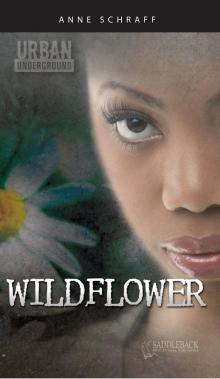 Wildflower
Wildflower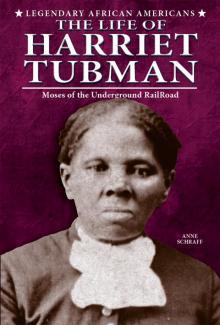 The Life of Harriet Tubman
The Life of Harriet Tubman Like a Broken Doll
Like a Broken Doll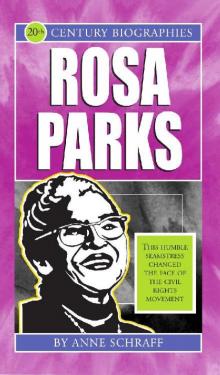 Rosa Parks
Rosa Parks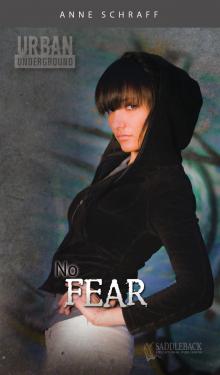 No Fear
No Fear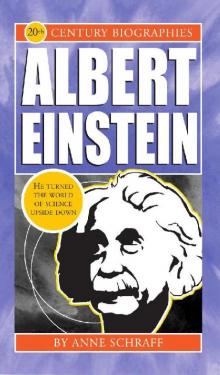 Albert Einstien
Albert Einstien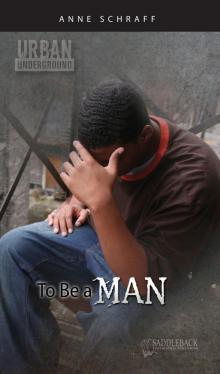 To Be a Man
To Be a Man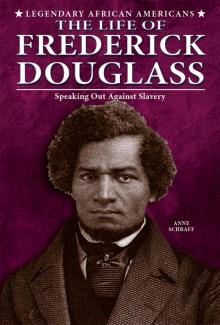 The Life of Frederick Douglass
The Life of Frederick Douglass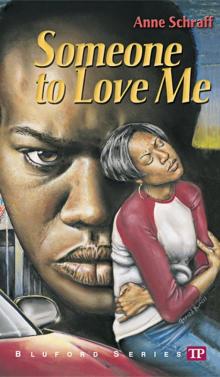 Someone to Love Me
Someone to Love Me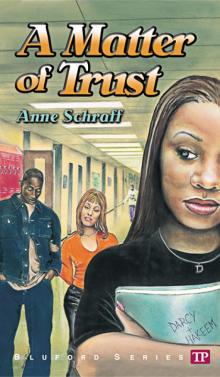 A Matter of Trust
A Matter of Trust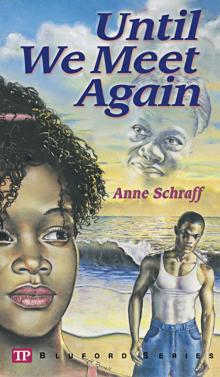 Until We Meet Again
Until We Meet Again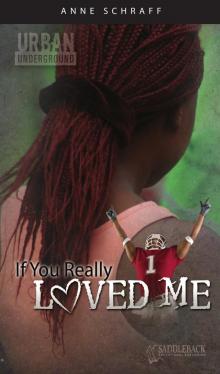 If You Really Loved Me
If You Really Loved Me